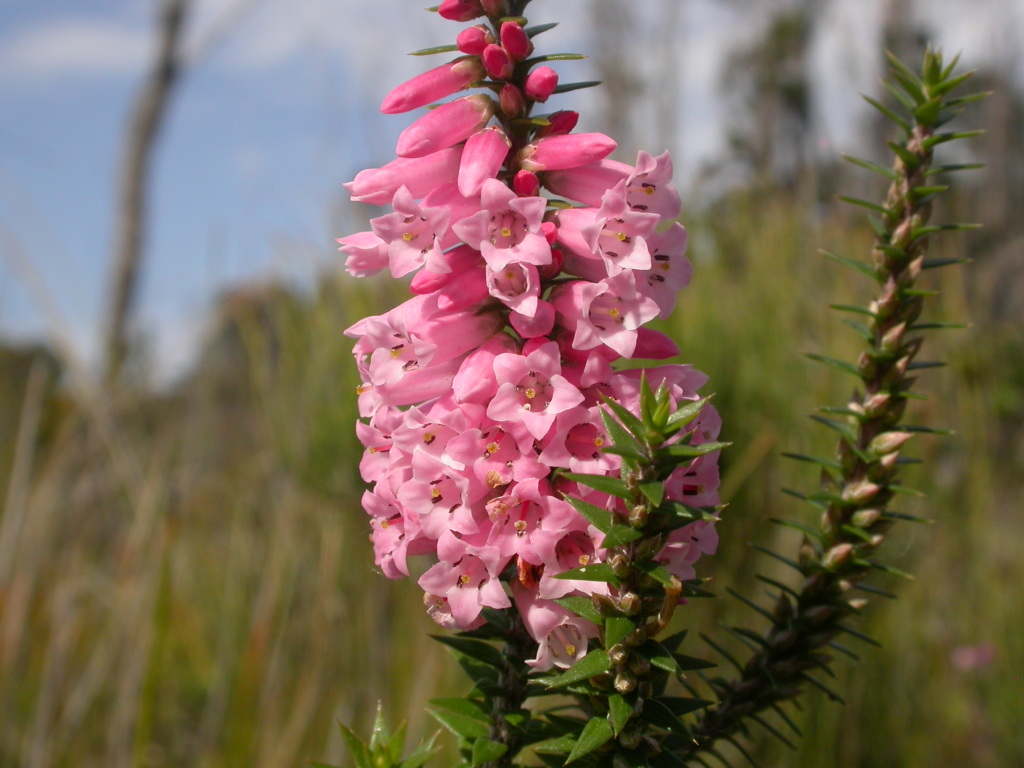Epacris impressa
Labill. Common HeathErect or spreading shrub to c. 1.2(–2) m high. Branchlets tomentose to villous. Leaves spreading at maturity, linear-lanceolate to elliptic-ovate, 4–15(–25) mm long, 0.8–3(–8.5) mm wide, glabrous to pubescent, flat, midvein keeled beneath, otherwise venation obscure; apex acute to acuminate, mucronate; margins minutely serrulate; base truncate to cuneate; petiole 0–1 mm long. Flowers pedicellate in axils, along 30 cm or more of upper branches, ± pendulous and secund; bracts (10–)15–30; sepals triangular to ovate, 2–5 mm long, acute; corolla white, pink or red, tubular to narrowly campanulate, tube 4–20 mm long, at least twice length of calyx, with 5 small indentations near the base, lobes 1–3.5 mm long, obtuse; anthers partly or fully exserted; ovary glabrous, nectary scales truncate, style tapering slightly (4–)7–16(–24) mm long, glabrous or rarely puberulent. Flowers all year, mainly Apr.–Nov.
LoM, Wim, GleP, VVP, GipP, OtP, WaP, Gold, CVU, GGr, DunT, NIS, EGL, EGU, WPro, HSF, HNF, OtR, Strz, MonT, HFE, VAlp. Common and widespread in southern Victoria, occurring principally in heathland, woodland and open-forest on sands, loams and rocky outcrops.
An extremely polymorphic species with respect to leaf size, indumentum, corolla colour and morphology, habit, flowering time and regeneration strategy. Studies focusing on such variation include Stace & Fripp (1977) and O'Brien & Calder (1989).
Some Grampians populations (e.g. on Mt Zero, Mt Stapylton and in the Black Range) are sometimes distinguished as var. grandiflora Benth. They differ from other Victorian populations of E. impressa in their villous (cf. tomentose to puberulent) branchlets and elliptic or elliptic-ovate pubescent leaves to 8.5 mm wide. However, plants with somewhat intermediate characters occur in the region (e.g. Victoria Range, Mt Arapiles), and other distinctive forms of the species occur locally in Victoria.
Albrecht, D.E. (1996). Epacridaceae. In: Walsh, N.G.; Entwisle, T.J., Flora of Victoria Vol. 3, Dicotyledons Winteraceae to Myrtaceae, pp. 464–509. Inkata Press, Melbourne.
 Spinning
Spinning


